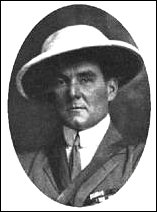Want to know what structuralism is? Take a quick look at the history of money and coinage. Today's Slate has a good Explainer column on the history of the U.S. nickle:
Why is stealing nickels and pennies such a bad deal? In the 1790s, the first U.S. coins were produced in proportion to a silver dollar (which was in turn based on the Spanish 8 Reales—the first dollars contained the same amount of silver as the then-common Spanish coin). The 50-cent piece had half as much silver as the dollar by weight, the quarter had one-fourth, the dime had one-tenth, and the tiny half-dime (or 5-cent piece), had one-twentieth. Only the copper penny was fiduciary—its worth was not tied to the value of the metal it was made of.
Thanks to the lobbying efforts of nickel-industry magnate and business-school founder Joseph Wharton, the composition of fiduciary coins changed in the mid-19th century. In 1857, the old, large copper pennies were replaced with smaller "1-cent nickels" made of a nickel alloy. Soon after, the U.S. Mint issued 3-cent nickels of similar material. And in 1866, the small and impractical half-dime was made fiduciary too, and the mint released a 5-cent nickel. At the same time, the 1-cent nickel was converted to bronze, and a new, bronze 2-cent piece was created. These bronze pieces were heavier than their nickel counterparts, so from the very beginning, 45,000 pounds of 5-cent nickels would have been more valuable than 45,000 pounds of pennies.
Subscribe to:
Post Comments (Atom)

No comments:
Post a Comment